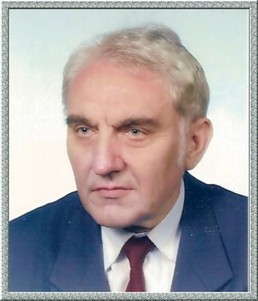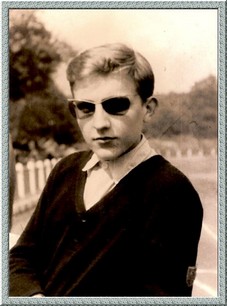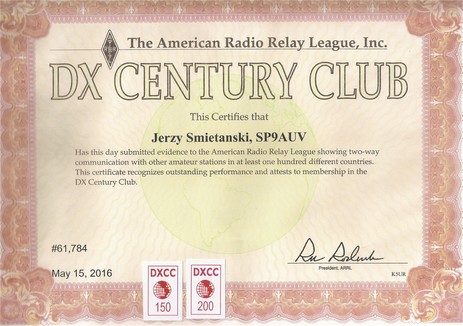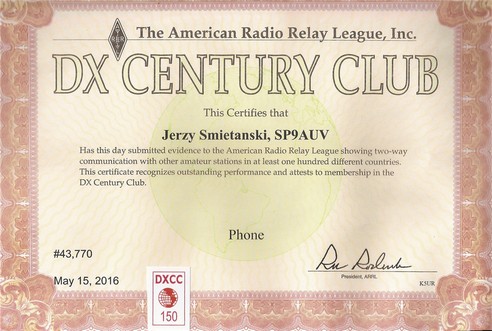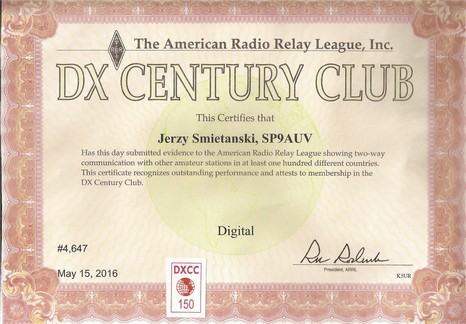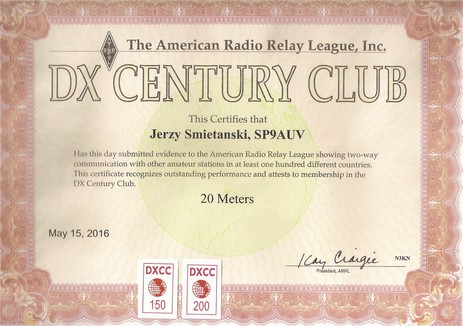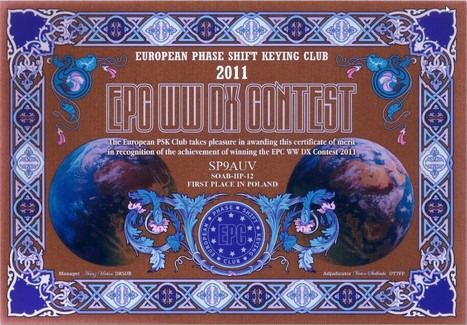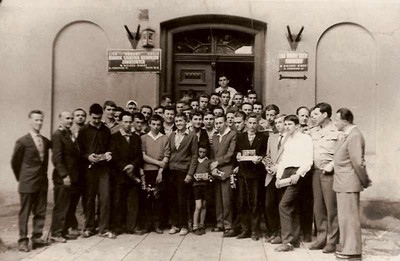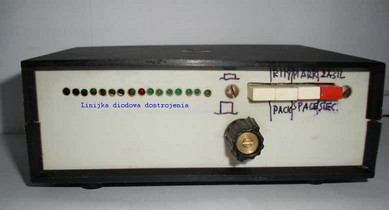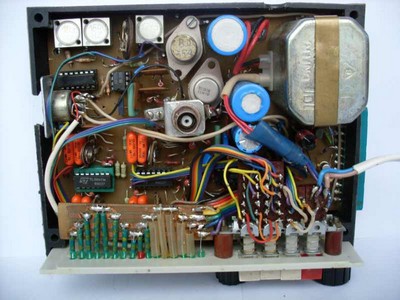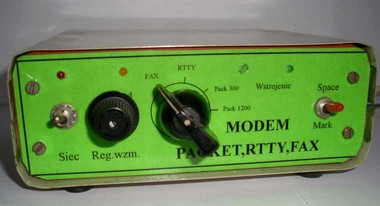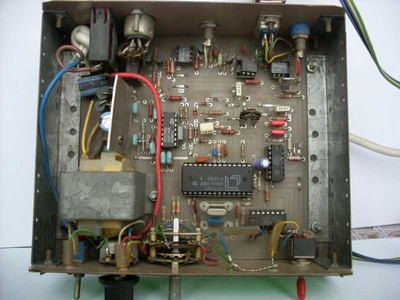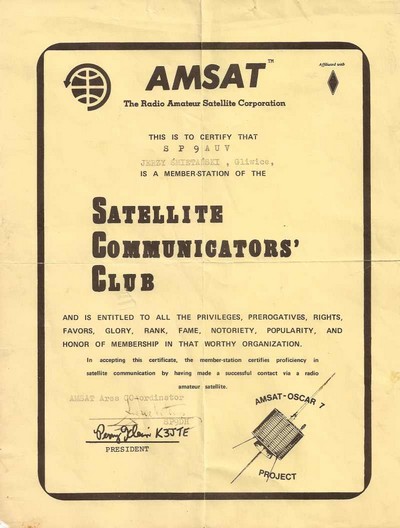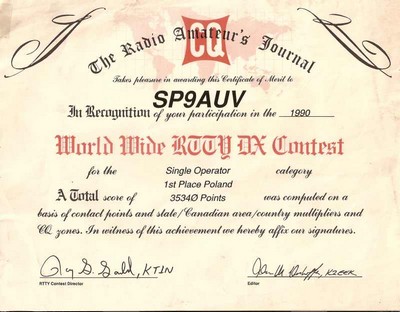Polski Związek Krótkofalowców |
|
Polski Klub Radiovideografii |
|
Navigation: »chapter is not sub-section upper level« SP9AUV- route to Amateur Radio and my interests |




|
| Expand all elements Callapse all elements |
Go to polish version
From the date of 03.03.2015 I was introduced to my web service for discussion groups FUDforum available in the one next chapter http://sp9auv.com/fudforum . It is designed to answer users to problems with my programs. You can also submit new section, which I will be create. Invite you to visit. Viewing discussion groups is possible without registering. But to post on the forum you need be register as amateur- ham callsign From this moment please report any problems with the programs only through this forum, which will save for me the time to repeatedly replying to the same problems by e-mail to anyone. |

Click on the photos to zoom in / out photos
With ham - radio I met in Raciborz in a 1957 years with 14 years old in the League of Friends of the Soldier PAP. In Raciborz at the time I attended the secondary school Technical School of Mechanical Engineering. At the very beginning I learned most the Morse telegraphy and also radio engineering and construction of transmitting and receiving devices.
After finishing learn in the Technical I settled in Gliwice , where began my studies at Pol. Silesia at the Department of Automatic Control. Immediately I sign to the club SP9KAG sp9kag.pl - of which I am a member today.
At date 14.11.1963, I get amateur license No. 1021-1063 - Series A - Category 1st . I gained callsign SP9AUV So a radio amateur I am already 53 years old (on day 07.10.2016 r)
At that time in Poland, if you wanted to transmit, you had to perform your own device TRX .My TRX home - made 5 bands look . On this devices I work to 2005 year :
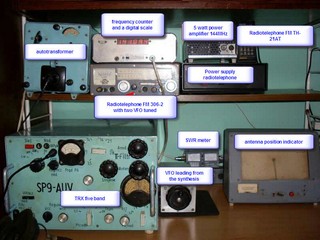 |
| Archive devices for station SP9AUV |
In the picture you can see Frequency counter with scale digital and FM radio 306 band 144 - 146 MHz with two VFO for transmit and receive.
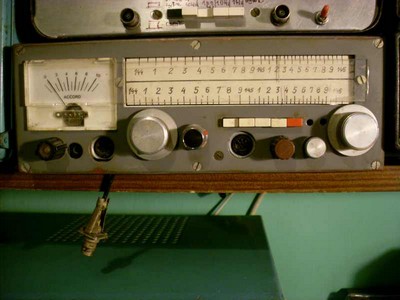 |
| The archive radiotelefone FM306 station SP9AUV |
=================================================================================================
After 2005 year began a new era in my life , because I bought a new device TRX namely TS2000. This model I chosen to re-start on amateur satellites.
 |
| SP9AUV in a radio shack |
Here are my antennas currently installed on the roof
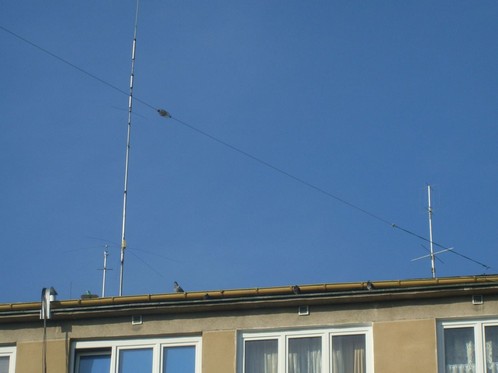 |
| Antena GP-7 bands by SP7GXP and GP on144 Mhz |
Antennas on the roof looking
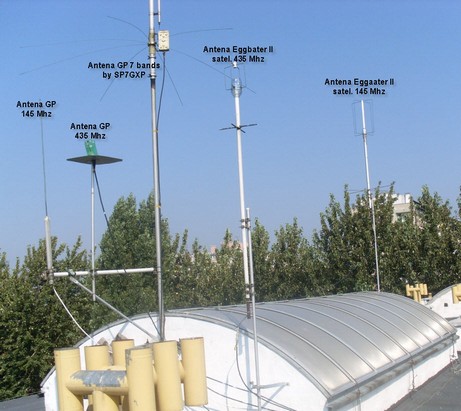 |
| Antennas on the roof |
Proper cable management over the gutter
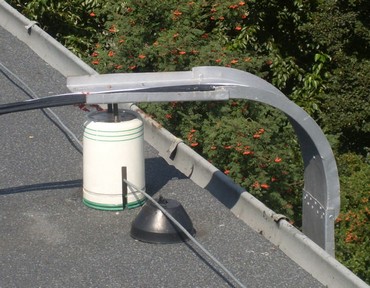 |
| Proper cable management over the gutter |
My interest can be grouped in the following themes :
This is a normal work with DX which mainly interested for any ham-radio person . To 2005 year , my ownership amounted to 95 countries confirmed .. At the present day, ie. 10.06.2016 my ownership countries has taken 262 countries made and 252 countries confirmed. I also have made and confirmed 7 continents (Antarctica). Number of zones CQ Zone confirmed is 40 zones. And here's what I got awards , mainly thanks to that notification application with use my program AWARD_SECRETARY described here
Other awards which I got using my program for awards AWARD_SECRETARY
|
As a computer scientist by profession I also wrote programs for amateurs. In 1989, she married my first version of the program to log POL-LOG working in DOS mode. Work on it was leading to 1995, the year in which I stopped distribution of the program . About this I am writing - especially in terms of certain features useful functions that I made in this program and have not found in a different loggers: It's especially for such functions as - notification when given station sign not only of information that it is a new country - but also that this is a new zone or continent if such a situation occurs - give full status successes for the callsign entered - useful eg. in a situation - "make sure country because they do not yet have any confirmation for CQ zone to which the callsign belong ' - prints selective for the log, the QSL's and achievements. They allowed people to easily specify the conditions for printing in this way that there was no problem printing to some awards . Most of the known programs permit the achievement of such statements for DXCC. CQ Zones, Continents and for a finite amount of awards . In the program POL-LOG there was no problem to achieve such statements for awards Worked ALL Countries in the 15 zones - examination on what date was made QSO and credit of the country according to the criteria which dates DXCC introduced for certain countries - ie for DXCC List. Other programs what I created is described in chapter Shortcut description of program for amateurs - radio developed by SP9AUV |
The 1st satellite communications I do at day 3.01.985 via the russian satellite RS 5. I also used the satellite RS7. For communication I use then very primitive equipment. as a transmitter 145 Mhz served me held and converted radio FM-306 (shown on the photograph above FM306) with two tuned VFO. I reached for it sufficient stability to work on the CW. As a receiver served me archive TRX shown in the photograph .. In 1985 I made RS5 satellites -7 about 67 QSO's - this 51 QSO was confirmed which gave 18 countries confirmed including such rarities on satellites RS-5 as the US W2YY and Svalbard JW0EQ. Unfortunately, the satellite RS-5-7 quickly ended his life. Doppler effect for 29 Mhz band is much smaller than on the 145 MHz band - ie 145/29 = 5 times. As an example of the band at 145 MHz Doppler effect for satellites such as low phase VO-52 is 6 Khz for the entire flight from east to west satellites. So for the RS-5 was then 6 Khz / 5 = 1.2 Khz at around the 15 minute flight. If we assume the duration of the QSO was 1 min to a total change of frequencies was 1.2 kHz / 15min = 0.08 KHz = 80 Hz what practically do not perform frequency correction .Work on CW do not need such a sharp correction regime Doppler effect as work on SSB. When changing frequencies with CW eg from 800 Hz to 1 kHz still can continue to receive, while SSB change of 200 Hz will do disortion in a receive Below a diploma certifying membership in a SATELLITE COMMUNICATIONS CLUB
|
As a computer scientist by profession I also interested the new digital modes - such as RTTY, Packet Radio, and PSK31
|
In this regard I do two courses for amateur radio in my home club SP9KAG and drove in the 1986 to 1993 Communications School Club SP9KVF in midlle School Technical Communications in Gliwice |
You are person visiting my site
|
Navigation: »chapter is not sub-section upper level « SP9AUV- route to Amateur Radio and my interests |




|
| Expand all elements Collapse all elements |

